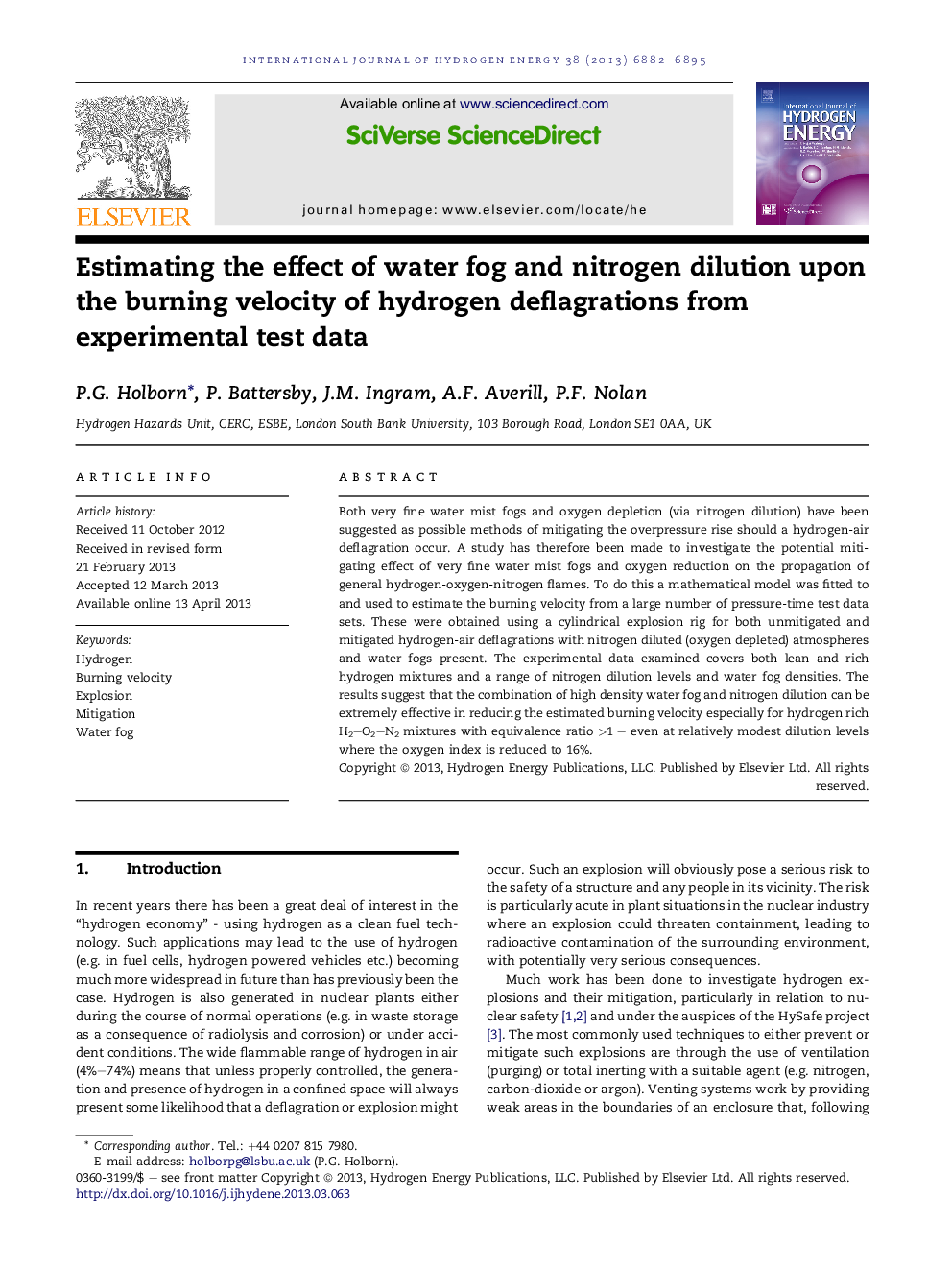| Article ID | Journal | Published Year | Pages | File Type |
|---|---|---|---|---|
| 1281611 | International Journal of Hydrogen Energy | 2013 | 14 Pages |
•Estimate the H2–O2–N2-water fog burning velocity from experimental explosion data.•Fog significantly reduces the burning velocity for lean/very-rich H2-air mixtures.•The combination of water fog and N2 dilution is more effective than either used alone.•The results display similar trends to direct flame measurements on a burner rig.
Both very fine water mist fogs and oxygen depletion (via nitrogen dilution) have been suggested as possible methods of mitigating the overpressure rise should a hydrogen-air deflagration occur. A study has therefore been made to investigate the potential mitigating effect of very fine water mist fogs and oxygen reduction on the propagation of general hydrogen-oxygen-nitrogen flames. To do this a mathematical model was fitted to and used to estimate the burning velocity from a large number of pressure-time test data sets. These were obtained using a cylindrical explosion rig for both unmitigated and mitigated hydrogen-air deflagrations with nitrogen diluted (oxygen depleted) atmospheres and water fogs present. The experimental data examined covers both lean and rich hydrogen mixtures and a range of nitrogen dilution levels and water fog densities. The results suggest that the combination of high density water fog and nitrogen dilution can be extremely effective in reducing the estimated burning velocity especially for hydrogen rich H2–O2–N2 mixtures with equivalence ratio >1 – even at relatively modest dilution levels where the oxygen index is reduced to 16%.
